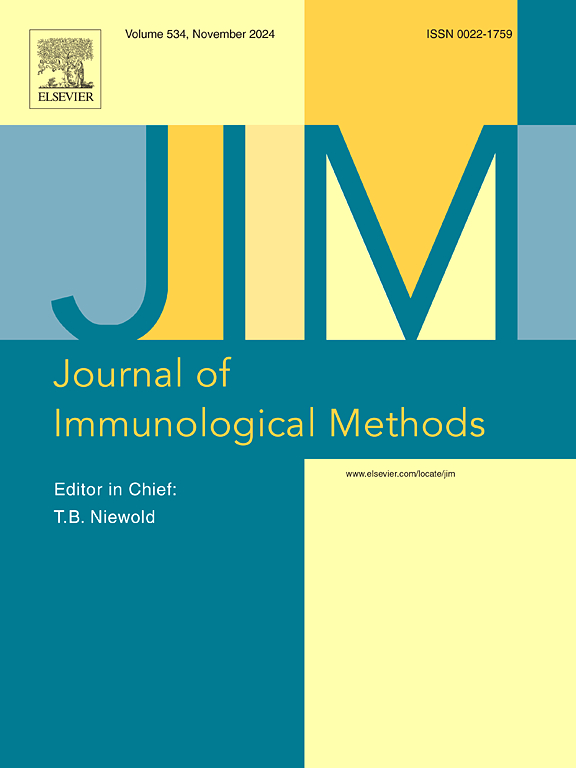Adaptation of the in vivo respiratory burst assay for fathead minnow larvae (Pimephales promelas)
IF 1.6
4区 医学
Q4 BIOCHEMICAL RESEARCH METHODS
引用次数: 0
Abstract
Initial innate immune responses such as the respiratory burst response of phagocytes present the first line of defense in response to exposure to pathogens. Several respiratory burst assays have been developed in mammals, cell cultures, and whole zebrafish embryos as a reliable indicator of the innate immune response of a host, and these assays are being used to screen various environmental contaminants for their immunotoxic potential. While zebrafish are a common laboratory fish used in toxicology studies geared towards human health effects, fathead minnows are commonly used as an ecotoxicological indicator species for North America. In this technical note, we describe how we adapted the zebrafish in vivo respiratory burst assay for use in fathead minnow larvae. This assay provides promising expansion of using in vivo respiratory burst responses in different species of larval fish for future comparative immunotoxicity assays, as well as laying the groundwork for studies that can better define the development of the innate and adaptive immune responses of fathead minnow larvae.
黑头鲦鱼(Pimephales promelas)幼虫体内呼吸爆发试验的适应性。
最初的先天免疫反应,如吞噬细胞的呼吸爆发反应,是暴露于病原体时的第一道防线。已经在哺乳动物、细胞培养物和整个斑马鱼胚胎中开发了几种呼吸爆发试验,作为宿主先天免疫反应的可靠指标,这些试验被用于筛选各种环境污染物的免疫毒性潜力。虽然斑马鱼是针对人类健康影响的毒理学研究中常用的实验鱼,但在北美,黑头鲦鱼通常被用作生态毒理学指示物种。在这篇技术笔记中,我们描述了我们如何将斑马鱼体内呼吸爆发试验用于黑头鲦鱼幼虫。该实验为今后在不同鱼类幼鱼体内进行呼吸爆发反应的比较免疫毒性试验提供了广阔的应用前景,并为更好地定义黑头鲦鱼幼鱼先天和适应性免疫反应的发展奠定了基础。
本文章由计算机程序翻译,如有差异,请以英文原文为准。
求助全文
约1分钟内获得全文
求助全文
来源期刊
CiteScore
4.10
自引率
0.00%
发文量
120
审稿时长
3 months
期刊介绍:
The Journal of Immunological Methods is devoted to covering techniques for: (1) Quantitating and detecting antibodies and/or antigens. (2) Purifying immunoglobulins, lymphokines and other molecules of the immune system. (3) Isolating antigens and other substances important in immunological processes. (4) Labelling antigens and antibodies. (5) Localizing antigens and/or antibodies in tissues and cells. (6) Detecting, and fractionating immunocompetent cells. (7) Assaying for cellular immunity. (8) Documenting cell-cell interactions. (9) Initiating immunity and unresponsiveness. (10) Transplanting tissues. (11) Studying items closely related to immunity such as complement, reticuloendothelial system and others. (12) Molecular techniques for studying immune cells and their receptors. (13) Imaging of the immune system. (14) Methods for production or their fragments in eukaryotic and prokaryotic cells.
In addition the journal will publish articles on novel methods for analysing the organization, structure and expression of genes for immunologically important molecules such as immunoglobulins, T cell receptors and accessory molecules involved in antigen recognition, processing and presentation. Submitted full length manuscripts should describe new methods of broad applicability to immunology and not simply the application of an established method to a particular substance - although papers describing such applications may be considered for publication as a short Technical Note. Review articles will also be published by the Journal of Immunological Methods. In general these manuscripts are by solicitation however anyone interested in submitting a review can contact the Reviews Editor and provide an outline of the proposed review.

 求助内容:
求助内容: 应助结果提醒方式:
应助结果提醒方式:


